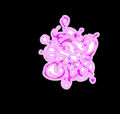Template:Selected anniversaries/December 27: Difference between revisions
No edit summary |
No edit summary |
||
| Line 22: | Line 22: | ||
||1889: Stephen Joseph Perry dies ... Jesuit and astronomer, known as a participant in scientific expeditions. Pic. | ||1889: Stephen Joseph Perry dies ... Jesuit and astronomer, known as a participant in scientific expeditions. Pic. | ||
||1900: William Armstrong dies ... engineer and businessman, founded Armstrong Whitworth. Pic. | |||
||1900: William Armstrong dies ... engineer and businessman, founded Armstrong Whitworth. | |||
||1904: Mojżesz Presburger born ... mathematician, logician, and philosopher. He was a student of Alfred Tarski and is known for, among other things, having invented Presburger arithmetic as a student in 1929. Pic. | ||1904: Mojżesz Presburger born ... mathematician, logician, and philosopher. He was a student of Alfred Tarski and is known for, among other things, having invented Presburger arithmetic as a student in 1929. Pic. | ||
||1914: Charles Martin Hall dies ... chemist and engineer. | ||1914: Charles Martin Hall dies ... chemist and engineer. Pic. | ||
||1915: Jacob Lionel Bakst Cooper born ... mathematician who worked in operator theory, transform theory, thermodynamics, functional analysis and differential equations. Pic. | ||1915: Jacob Lionel Bakst Cooper born ... mathematician who worked in operator theory, transform theory, thermodynamics, functional analysis and differential equations. Pic. | ||
| Line 40: | Line 38: | ||
File:Jean Bartik.jpg|link=Jean Bartik (nonfiction)|1924: [[Jean Bartik (nonfiction)|Jean Bartik]] born. She will be one of the original programmers for the [[ENIAC (nonfiction)|ENIAC]] computer. | File:Jean Bartik.jpg|link=Jean Bartik (nonfiction)|1924: [[Jean Bartik (nonfiction)|Jean Bartik]] born. She will be one of the original programmers for the [[ENIAC (nonfiction)|ENIAC]] computer. | ||
||1938: Calvin Bridges dies ... geneticist and academic. | ||1930: Gyula Farkas dies ... mathematician and physicist. He will be known for Farkas' lemma, a solvability theorem for a finite system of linear inequalities. This will be the key result underpinning the linear programming duality; it will play a central role in the development of mathematical optimization. Pic. | ||
||1938: Calvin Bridges dies ... geneticist and academic. Along with Alfred Sturtevant and H.J. Muller, Bridges was part of the famous fly room of Thomas Hunt Morgan at Columbia University. Pic search good: https://www.google.com/search?q=calvin+bridges | |||
File:Edmund Husserl 1910s.jpg|link=Edmund Husserl (nonfiction)|1938: Mathematician and [[APTO]] consulting philosopher [[Edmund Husserl (nonfiction)|Edmund Husserl]] publishes his theory of transcendental consciousness as the limit of all possible [[Gnomon algorithm]] functions. | File:Edmund Husserl 1910s.jpg|link=Edmund Husserl (nonfiction)|1938: Mathematician and [[APTO]] consulting philosopher [[Edmund Husserl (nonfiction)|Edmund Husserl]] publishes his theory of transcendental consciousness as the limit of all possible [[Gnomon algorithm]] functions. | ||
Revision as of 20:06, 23 February 2019
1571: Mathematician, astronomer, and astrologer Johannes Kepler born. He will discover laws of planetary motion.
1643: Mathematician, physicist, and crime-fighter Francesco Maria Grimaldi finds case where the distance of fall is not proportional to the square of the time taken, leading to discovery and deletion of crimes against mathematical constants.
1773: Engineer George Cayley born. He will do pioneering work in aeronautics, investigating and codifying the dynamics of flight.
1834: Inventor and crime-fighter Charles Grafton Page publishes new class of Gnomon algorithm functions which compute and prevent crimes against mathematical constants.
1923: Engineer Gustave Eiffel dies. He designed the world-famous Eiffel Tower.
1924: Jean Bartik born. She will be one of the original programmers for the ENIAC computer.
1938: Mathematician and APTO consulting philosopher Edmund Husserl publishes his theory of transcendental consciousness as the limit of all possible Gnomon algorithm functions.
1990: Mathematician and APTO field engineer Anne Penfold Street discovers new class of Gnomon algorithm functions which use sum-free sets to detect and prevent crimes against mathematical constants.
2016: Taffy Bomb voted Picture of the Day by the citizens of New Minneapolis, Canada.








